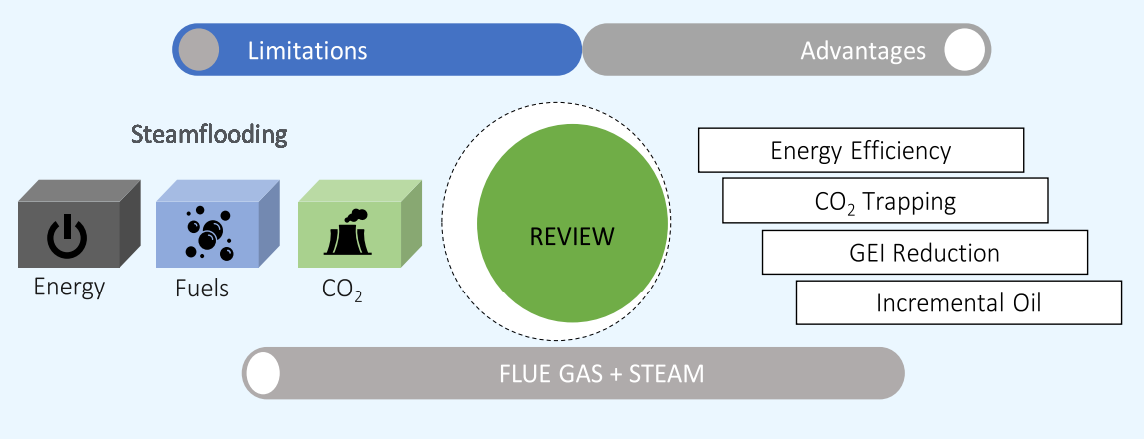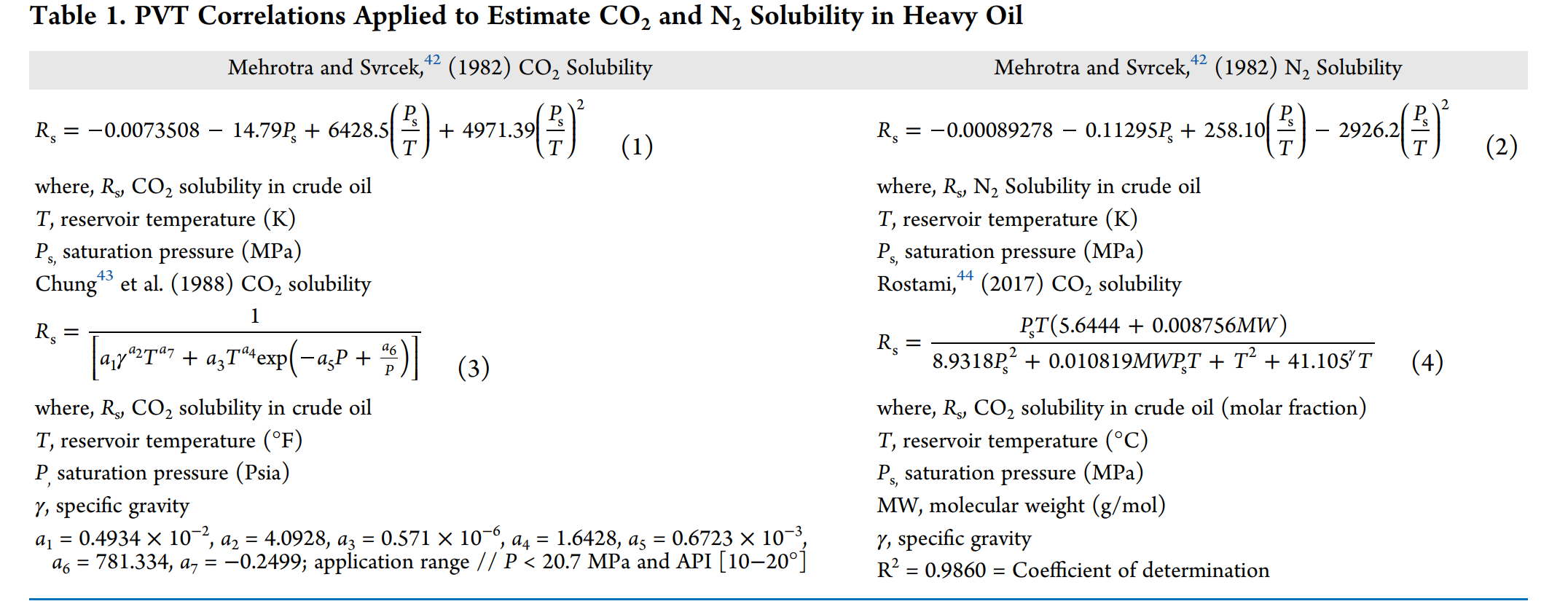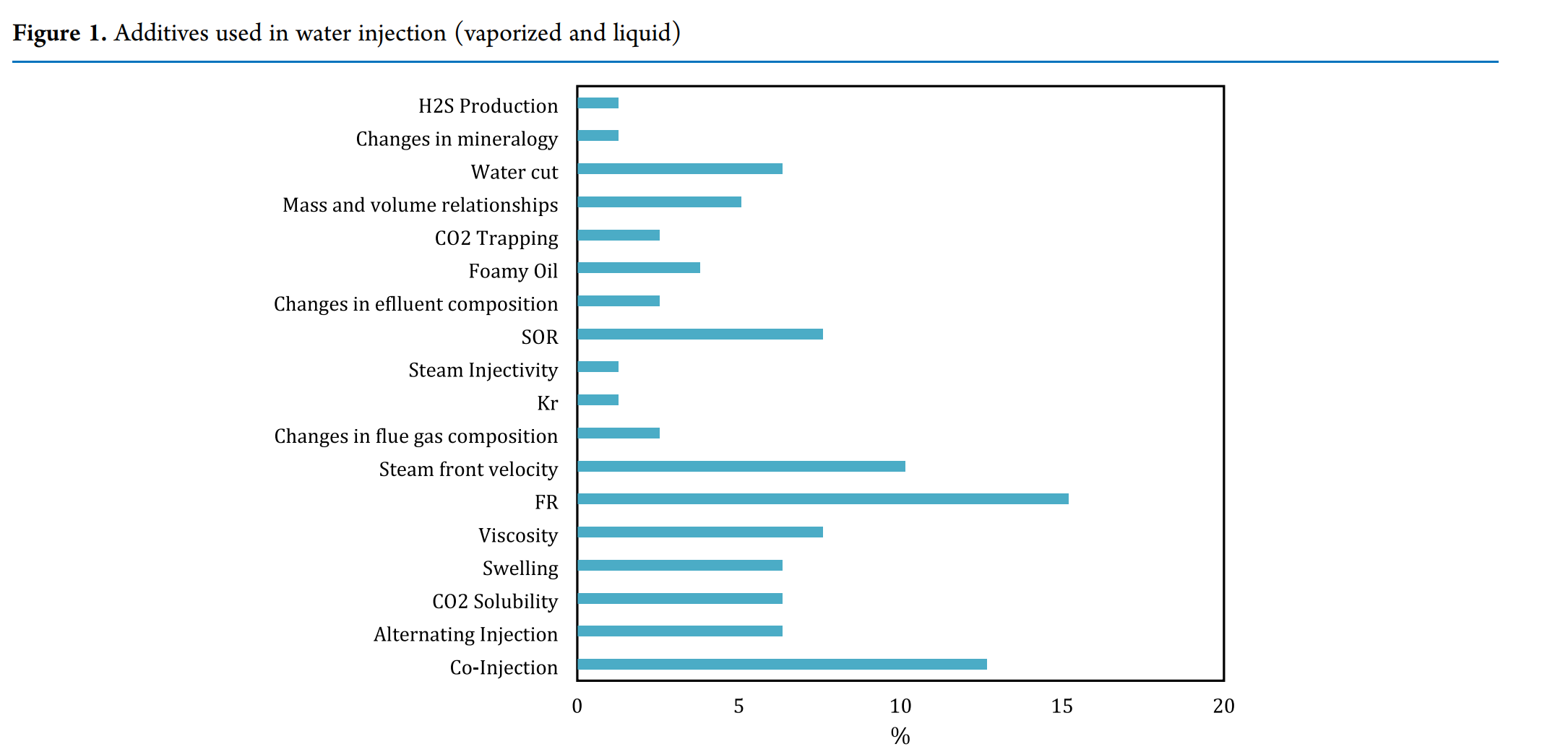Combining Steam and Flue Gas as a Strategy to Support Energy Efficiency: A Comprehensive Review of the Associated Mechanisms
传统的蒸汽注入项目在开发重油储量方面一直是一种标志性技术,但在能源效率、环境合规性和经济可行性方面面临重大挑战。油价波动、能源转型的迫切需求以及减少碳足迹的压力,阻碍了传统蒸汽注入技术的新建或正在进行的实施。
为了应对这些挑战,混合方法(如蒸汽与烟道气的结合)作为一种优化热过程以提高采收率、能源效率和环境可持续性以及延长油藏寿命的机会应运而生。蒸汽注入通过降低原油黏度、提高原油流动性来促进其开采。在蒸汽注入过程中使用烟道气对采收率和能源效率有显著影响,利用工业副产品不仅降低了运营成本,还减少了环境排放,符合能源转型趋势。将烟道气纳入蒸汽基工艺已成为一种有前景的热采策略。
本研究基于实验、数值和现场研究,对蒸汽和烟道气混合技术作为提高采收率(EOR)工艺进行了全面综述。分析了与该工艺相关的主要采收机理,介绍了用于实验评估的实验室设备,讨论了储层建模、动力学和组成对储层流体的影响,以及蒸汽注入过程中热损失的减少。此外,还回顾了现场实施情况,以评估在操作规模上的经验教训和经验。蒸汽和烟道气的结合为碳利用和地质碳封存提供了机会。这种双重功能突显了其在提高采收率和解决碳相关环境问题方面的潜力。
CMG软件应用情况
在本研究中,CMG软件被用于模拟蒸汽和烟道气混合注入过程中的气体捕获和封存。研究中提到,CMG的热采模拟器(STARS)和组分模拟器(GEM)都包含了用于模拟热过程和气体捕获现象的模型。这些模型能够帮助研究人员和工程师更好地理解和预测蒸汽和烟道气混合注入过程中气体的动态捕获饱和度、相对渗透率的滞后效应以及气体在油相中的溶解行为。通过这些模拟,研究能够评估不同注入方案对提高采收率和减少碳排放的潜力,从而为现场应用提供理论支持和技术指导。



Abstract
Conventional steam injection projects have long been an iconic process in the development of heavy oil reserves; nevertheless, they face significant challenges in terms of energy efficiency, environmental compliance, and economic viability. Factors such as oil price fluctuations, the imperative for an energy transition, and the push to reduce carbon footprints are hindering new or ongoing implementations of traditional steam injection technologies. In response to these challenges, hybrid methods, such as the combination of steam and flue gas, are emerging as an opportunity to optimize thermal processes to improve oil recovery, energy efficiency, and environmental sustainability and extend reservoir productivity life. Steam injection enhances oil recovery by reducing the viscosity of crude oil, improving oil mobility and facilitating its extraction. The utilization of flue gas in steam injection processes has a significant impact on oil recovery and energy efficiency, leveraging industrial byproducts. This not only lowers operating costs but also reduces environmental emissions, aligned with energy transition trends. Incorporating the flue gas into a steam-based process in heavy oil reservoirs has emerged as a promising thermally enhanced oil recovery strategy. This work presents a comprehensive review based on experimental, numerical, and field studies of hybrid steam and flue gas technology as an EOR process. The main recovery mechanisms associated with the process are analyzed. In addition, the laboratory equipment required for experimental evaluations is presented, and reservoir modeling, kinetic and compositional effects on reservoir fluids, and the reduction in heat losses in the steam injection process are discussed. Furthermore, field implementations are reviewed to evaluate lessons learned and experiences on an operative scale. The combination of steam and flue gas represents an opportunity for carbon utilization and geological carbon sequestration. This dual functionality underscores its potential to enhance oil recovery and address carbon-related environmental concerns.
作者单位
加拿大卡尔加里大学
